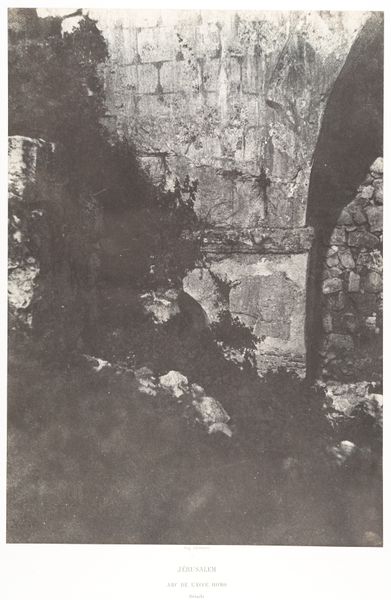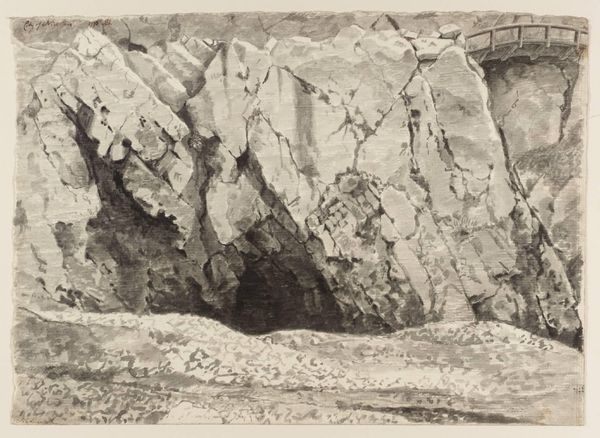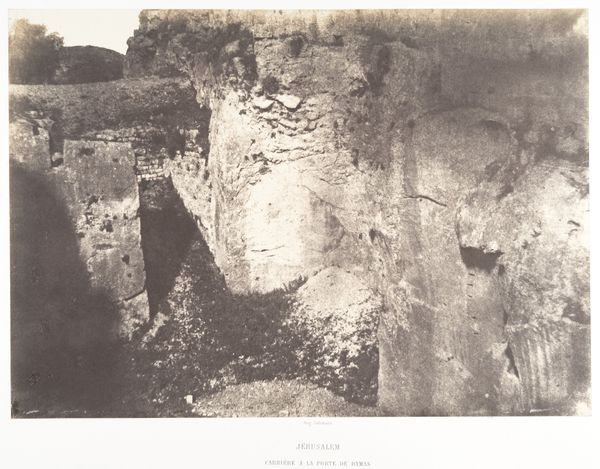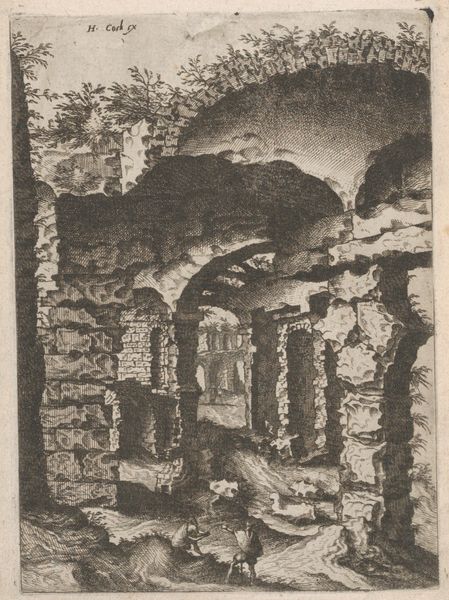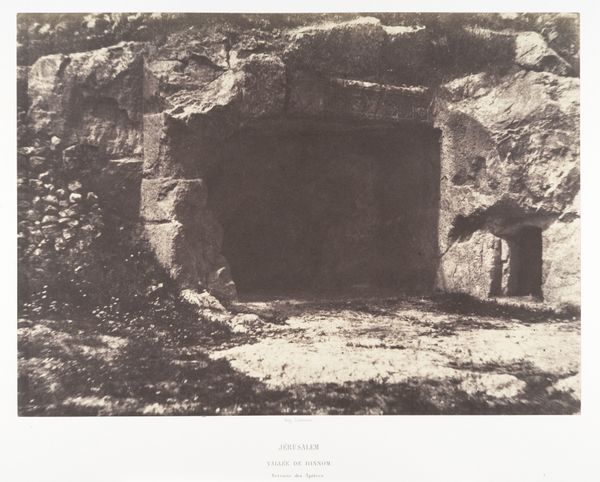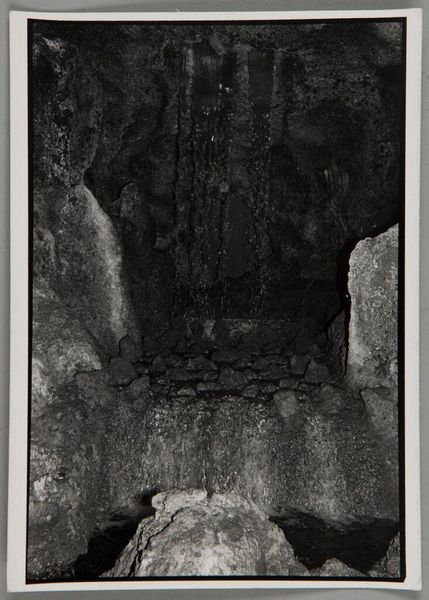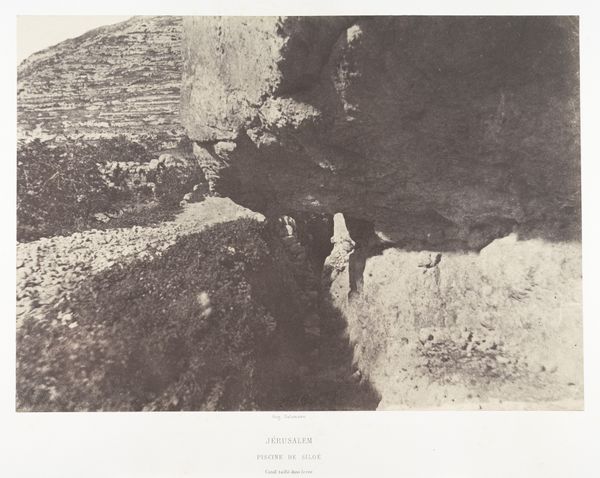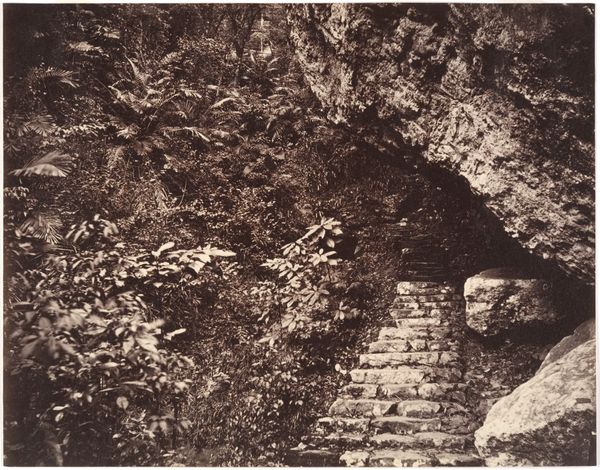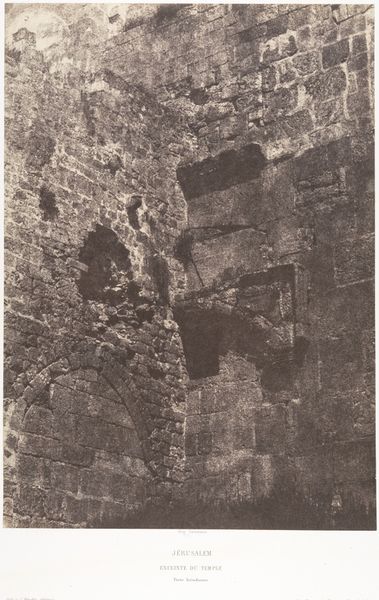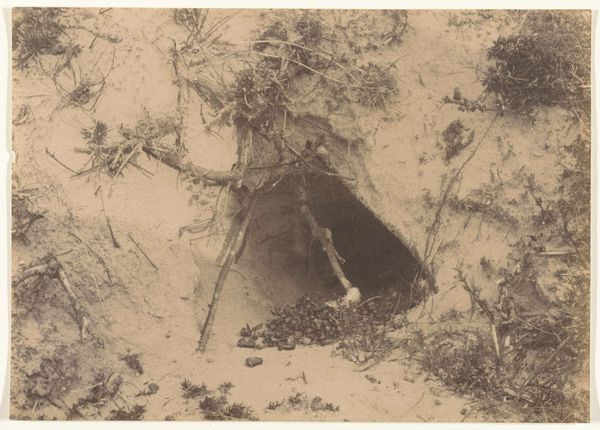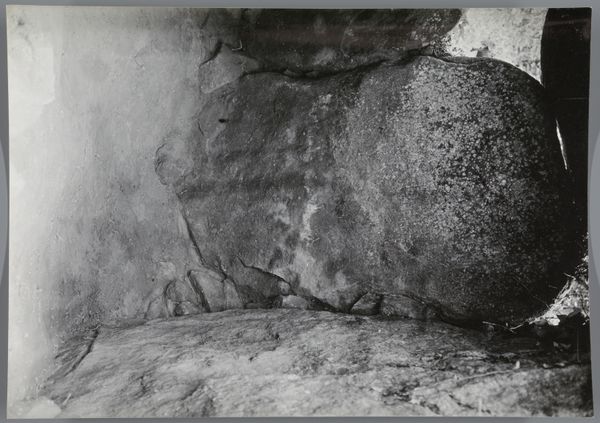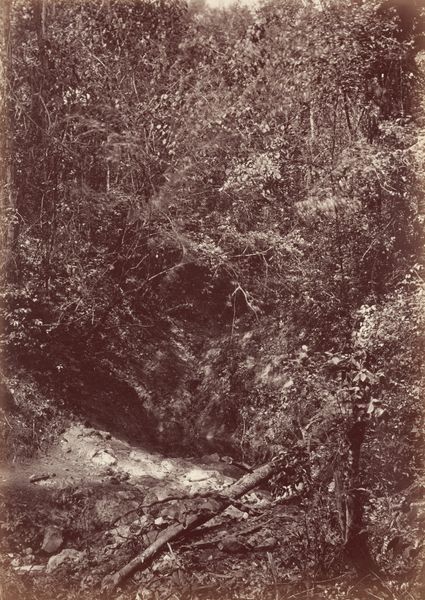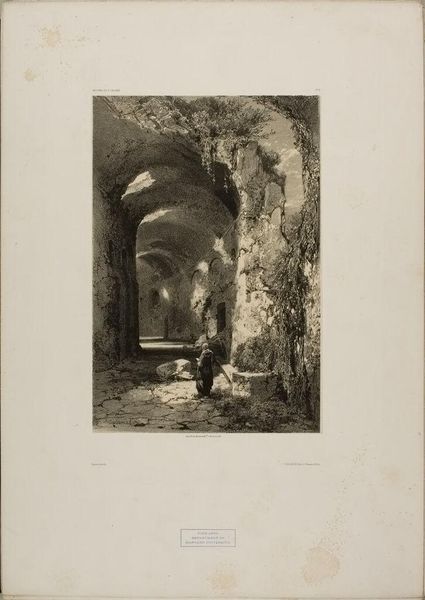
Jérusalem, Vallée de Hinnom, Tombeau antique à fronton triangulaire et à crossettes 1854 - 1859
0:00
0:00
daguerreotype, photography
#
landscape
#
daguerreotype
#
photography
#
ancient-mediterranean
#
islamic-art
Dimensions: Image: 32.6 x 23.4 cm (12 13/16 x 9 3/16 in.) Mount: 59.6 x 44.4 cm (23 7/16 x 17 1/2 in.)
Copyright: Public Domain
Editor: So this daguerreotype, “Jerusalem, Valley of Hinnom, Ancient Tomb with Triangular Pediment and Crossettes,” was captured by Auguste Salzmann sometime between 1854 and 1859. It's incredibly detailed, almost haunting. There’s a tomb entrance, half-hidden by foliage, that just feels…ancient. What catches your eye most in this image? Curator: The vulnerability, the sheer impermanence it captures. Salzmann wasn't just documenting a tomb; he was wrestling with time. Notice how the light barely kisses the stone? It's like memory itself, fading, yielding to the insistent creep of nature. And daguerreotypes, you know, each one unique like a fleeting thought. Do you get a sense of being there, perhaps, witnessing a secret? Editor: Absolutely. It feels like I'm intruding on something private, a forgotten corner of history. The plants growing over the entrance make it seem so lost and forgotten. How do you think this contrasts with more contemporary photography of similar sites? Curator: Today, we’re obsessed with perfect clarity, hyper-reality. But here, the softness, the almost ghostly quality, serves to deepen the mystery. It’s not about flawless representation; it's about feeling the weight of centuries, the layers of stories buried in that earth. It makes you wonder, doesn't it, about what stories lie just beyond our vision? Editor: That's a lovely way to put it, a “ghostly quality.” I hadn’t really considered the impact of the daguerreotype process itself on the feeling of the image. It makes the tomb feel even more ephemeral. Curator: Exactly! And that ephemerality becomes part of the subject itself, doesn’t it? It’s less a record and more of a meditation on mortality and the slow, beautiful decay of things. Editor: I see what you mean. Thank you! I'm going to have to rethink my whole approach to photography now. Curator: Ah, but that’s the magic, isn't it? Art should stir, unsettle, and maybe leave us pondering a little longer under the sun.
Comments
No comments
Be the first to comment and join the conversation on the ultimate creative platform.
